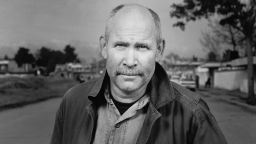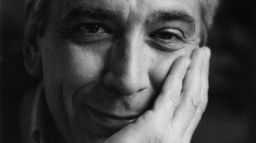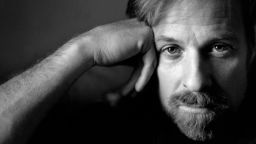Editor’s Note: Ray Sanchez, then a columnist for Newsday in New York, reported from the same dust-covered streets of lower Manhattan that day in 2001.
Story highlights
Photographers on the scene on 9/11 look back on their experiences on the day
"Our lives changed forever," one says. "Words cannot describe. This was unreality"
Shortly after September 11, 2001, photographer Steve McCurry stored his processed film of the destruction in a filing cabinet at his Manhattan studio. He did not look at the images closely again for 10 years.
“I really didn’t want to relive that whole thing,” McCurry says. “I couldn’t look at it. It was too painful.”
The memories remain raw for many people. The passage of 15 years doesn’t make it easier.
The haunting and surreal images captured by members of the Magnum Photos collective on the day of the World Trade Center attacks may help explain why. The photos of one of the most observed catastrophes in history were collected in the book “New York September 11.”
McCurry, 66, had just returned from a trip to China. His photo equipment was still packed. His assistant’s mother called the studio to say the World Trade Center was burning. He grabbed his cameras and headed to the roof.
At 9:59 a.m., the south tower began to crumble. In 10 seconds, it was gone.
“That didn’t happen,” McCurry remembers thinking. “This is like a dream.”

McCurry kept shooting from his vantage point high atop Greenwich Village.
At 10:28 a.m., the north tower went down. McCurry’s camera captured the volcanic-like eruption of debris raining down over lower Manhattan, with a thick plume of gray smoke staining a clear blue sky. It took 102 minutes from the time of the first attack to the collapse of both towers.
“Then our lives changed forever,” McCurry says. “Words cannot describe. This was unreality.”
‘You’re going to die!’
Gilles Peress had been taking photos for The New Yorker about seven years. He first heard about the attacks in a phone call from his studio manager.
Peress, 69, packed his cameras and headed on foot from Brooklyn into lower Manhattan. Waves of people walked hurriedly in the opposite direction, some protecting their faces from the thick clouds of dust.
“The cops tried to stop me: ‘You’re going to die! Don’t go! Don’t go! You’re going to die!” Peress recalls.
He trudged along familiar streets now covered in dust and sheets of paper. Around him, a city the French photographer has long called home struggled against confusion, flames and horror.
“None of this was imaginable,” he says.

When Peress reached the site where the north tower had once stood, his camera captured a pair of masked firefighters – one standing with his arms at his side, the other pushing a stretcher.
On this day, the best-laid plans for treating patients never developed.
“The thing to remember is that the firefighters were alone at that time,” Peress says. “There was no police. No ambulance. Nobody else. It was just those two guys for quite a while.”
At the World Trade Center, 2,753 people were killed when the hijacked planes were intentionally flown into the towers or as a result of the crashes.
Of those who perished, 343 were firefighters, 23 were police officers and 37 were officers with the Port Authority.
“They were the only ones who stayed,” Peress says of the firefighters and other first responders.
“They were the only ones who tried to get in. They were the only ones who didn’t run away. … And they were doing it clearly against all odds. It was a desperate situation but they were there.”
‘The world he is coming into’
Alex Webb and his wife, Rebecca Norris Webb, also a photographer, rented a car in Brooklyn after hearing the towers were hit. They drove to the edge of the East River with the intention of crossing into Manhattan on foot.
Webb, 64, usually works alone but his wife insisted on coming.
“She’s not a photographer of conflict,” Webb says. “She takes these sort of often extremely rather delicate and beautiful pictures … in the natural world. I said, ‘Wait a minute. I don’t want to be worried about you coming with me.’ She said, ‘I don’t want us to be separated on this day.’”
In Brooklyn Heights, after the Webbs parked their rental car, a person came out of a doorway and asked if they wanted to see what happened from the rooftop.

A group of residents had gathered. A mother gently tended to her baby as a thick, dark plume of smoke enveloped lower Manhattan.
“From the perspective of being a photographer, it was an utterly serendipitous photograph,” Webb says of his picture of a mother and child.
“I came onto the roof and there were some people out there and practically the first picture I took was the series of that woman and baby.”
He added, “Thinking about the picture afterward, there is something sort of haunting about the notion that here’s this baby and this huge disaster behind and there’s some sense that, ‘Well, this is the world he is coming into.’”
‘A life-changing event’
McCurry recalls passing several police checkpoints as he made his way to where the towers once stood.
“I wasn’t going to be stopped,” he remembers.
“This was something I had to do … I just felt like I had to do my part as a document, as a memory of what happened. It kind of felt like this was an attack on my neighborhood, in my home.”
He captured heartrending images of firefighters struggling to find survivors, of the sheer magnitude of the destruction not far from his home. “There was all this effort to look for people and survivors but it was just so futile,” he said. “The whole thing just seemed so unreal.”
Emotions among first responders were running high.
“Some of the firemen were really upset,” McCurry said. “One wanted to come after us with a shovel.”
McCurry calls 9/11 “a life-changing event.”
“For a long time after I had kind of a vertigo,” he says. “In my apartment – I live on the 17th floor – I felt like the building was going to fall. Your mind played tricks on you.”
Peress said 9/11 propelled the nation into a tumultuous period from which it has yet to emerge.
“The beginning of the century was extremely chaotic and very, very intense and almost everybody was left disoriented in terms of what to think, what to do, what to feel,” he says. “We really are in the Twilight Zone since then.”















